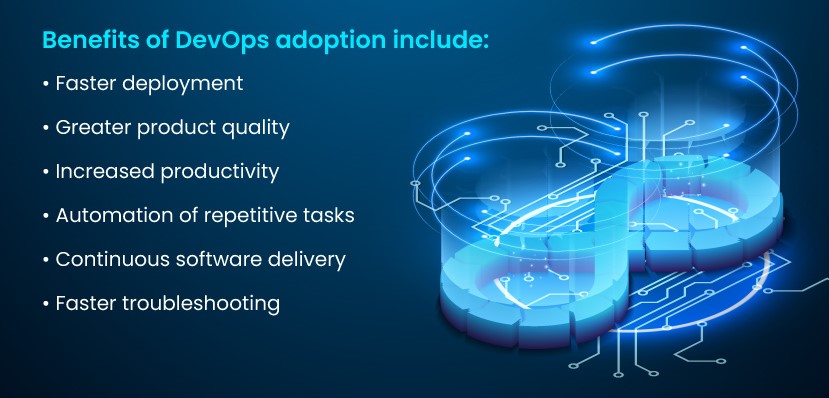A new era in IT has begun. The days of development and operations working in separate silos with independent tools, processes and goals are over. DevOps is becoming a more popular organizational culture. By doing so, they seek to overcome counterproductive team rivalry and automate manual processes to accelerate software development lifecycles.
Why DevOps?
When it comes to enterprises, organizations are increasingly embracing DevOps principles to gain a competitive edge by delivering high-quality products to the market faster.
During the pandemic, all the digital transformation accelerated, and DevOps was carried along with that. 13% of enterprises said they started new DevOps projects during lockdown, and other 28% said they accelerated projects that are already in progress.” Craig Matsumoto, Senior Research Analyst at 451 Research
Behind the scenes, DevOps helps development and operations overlap and work together, addressing technical issues through pipelines, streamlining submission, testing, and revision of code. This merging of two different technologies and philosophies into a collaborative tandem improves product quality and provides more value to customers. Development gets to focus on coding, while operations create the right production environment to ensure software quality and reduce lead times.
However, striving for more agility can leave organizations struggling with infrastructure-related challenges.
Finding DevOps-Friendly Infrastructure
DevOps and cloud-native tend to go together. The infrastructure that supports these applications must also follow this trend. As monolithic architectures are being replaced by more agile, scalable and flexible ones, it is important to ensure the infrastructure can support them. A growing number of companies are operating their application services within multi-cloud environments. This model has the following benefits:
While cloud computing is a great fit for DevOps, issues such as security, cost, compliance and monitoring can hinder its adoption. Bare Metal Cloud for DevOps
DevOps can scale their infrastructure with simple API calls. They can deploy and destroy instances within minutes. Also, they can leverage familiar, integrated IaC tools for automating their infrastructure management tasks.
Speaking of automation, BMC users gain access to actively maintained
for streamlining the platform’s provisioning and creating CI/CD pipelines directly from GitHub.
When it comes to containerized workloads, BMC allows developers to define, deploy, and manage servers from within Kubernetes clusters. Additionally, BMC instances can be deployed with SUSE Rancher pre-installed, simplifying Kubernetes cluster management.
You can deploy servers with pre-installed Rancher software on Bare Metal Cloud in under 2 minutes. GitHub actions to learn how! BMC instances are able to access their hardware resources without any hypervisor overhead. This allows them to deliver high performance for a variety of use cases. BMC instances, powered by Intel(r), Xeon(r), Scalable CPUs 3rd controller for K8s generation, are designed for data-intensive workloads like virtualization, AI and ML. BMC instances can be powered by the latest Intel Optane (r) Persistent Memory to deliver unmatched performance. With Intel SGX available in selected instances, BMC also enables confidential computing through hardware-level data encryption.
Overall, BMC presents an opex-modeled, orchestration-ready solution that delivers outstanding performance with cloud-like agility and flexibility. With pay-per-use and monthly reservation models, it is a scalable and cost-efficient platform for cloud-native applications and services.
We are very much about orchestration and automation exposure to the bare metal cloud system that we have developed. It’s similar to the technology used by ninjas for orchestration stacks such as Terraform or Ansible. It makes it very easy for developers to take the resources they are already exposed to, make a couple of config line changes and go launch
